This Way Up for Saturday 5 March 2016
This Way Up Part 1
Does your car fit you? Also tech news (Apple vs FBI and 3D TV) and the prospect of a Braille tablet.
Does your car fit you?
The AA's CarFit programme shows older drivers how to set up their car. We attend a fitting session with the AA's Rochelle Comber, project co-ordinator Chris Brooks, Richard Brough, Paul Lambert, Adrian Ash and Kaye Monk.

AA CarFit Upper Hutt Photo: Simon Morton
Tech: Apple vs FBI and 3D TV
Peter Griffin with technology news, and the latest on Apple vs the FBI, why 3D TV really hasn't taken off, and a new drone comes to town. You can find the Washington Post article we discuss here.

Peter Griffin Photo: Supplied
Braille tablet
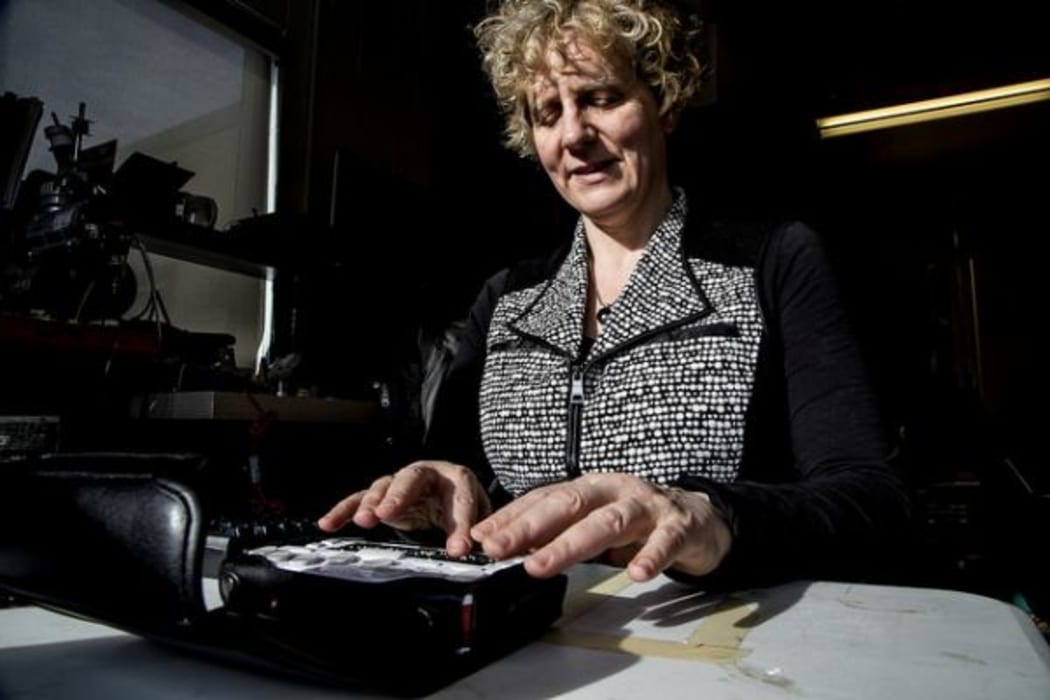
Sile O'Modhrain Photo: (Joseph Xu)
Equations, science, maths and musical scores could all become more useable and engaging for the visually impaired with the development of a full-page Braille tablet.
Braille is the system of raised dots that helps blind and partially sighted people to read by touch. It's named after the French inventor Louis Braille, who lost his eyesight in a childhood accident and came up with the first version of his code in 1824, aged 15.
Most of the digital technology that displays Braille does so line by line, but soon equations, science, maths and musical scores could all become more accessible with the development of a full-page Braille tablet.
Sile O'Modhrain and her colleagues at the University of Michigan are working on this tactile display screen that refreshes as you read it. She talks with Simon Morton:
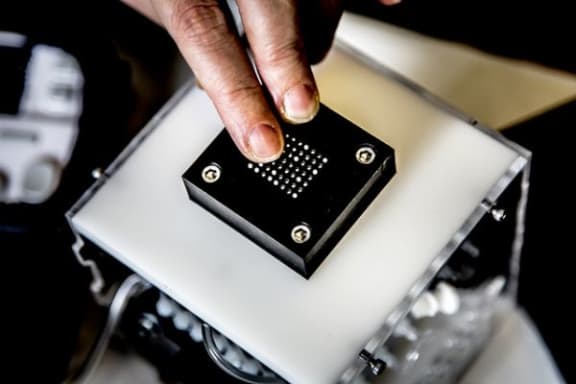
Sile O'Modhrain tests a braille display Photo: (Joseph Xu)
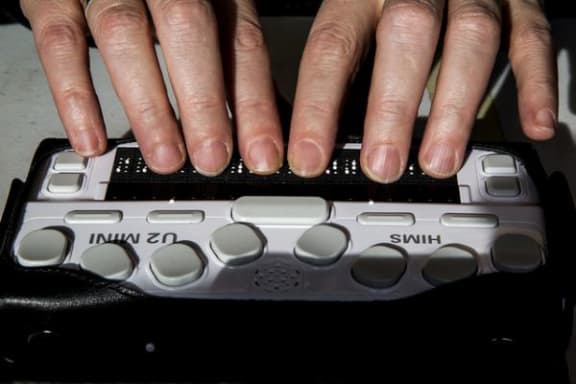
Testing the braille display Photo: (Joseph Xu)
This Way Up Part 2
China's football revolution, online cancer hoaxes, science news (robotic skin and thought-controlled wheelchairs) and the evolution of chins.
China's football revolution

TEDA Soccer Stadium in Tianjin Photo: (Craighong CC BY-SA 3.0)
There's a football revolution going on in China. The country's influence on the world game and its economics has never been greater.
Earlier this year the Chinese transfer record (the amount a club pays for a single player) was broken 3 times in the space of 10 days.
The record rose from the NZ$52 million paid by Jiangsu Suning for Chelsea's Ramires to the $80 million paid by the same club for Shakhtar Donetsk's Alex Teixeira in just over one week!
Meanwhile, total transfer spending of $500 million by Chinese clubs over the winter transfer window outstripped the English Premier league for the first time.
Owen Gibson is the chief sports correspondent of The Guardian and has been writing about China's surging influence in the world game.

Brazilian Alex Teixeira, now playing for Chinese club Jiangsu Suning Photo: (CC BY 2.0)

Owen Gibson Photo: Supplied
Online cancer hoaxes

Dana Dirrs' 'memorial' pages Photo: (warriorelihoax.com)
There's a famous New Yorker cartoon from 1993 that shows a dog sitting at a computer screen saying to another dog 'On the internet nobody knows you're a dog'.
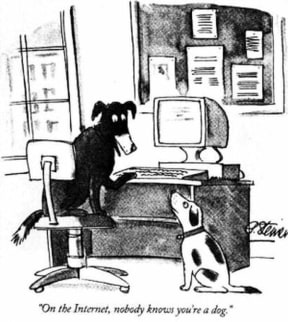
Image from The New Yorker cartoon by Peter Steiner, 1993. Photo: Fair use
Things aren't always quite as they seem on the interweb, as journalist Rachel Monroe discovered when she wrote about internet illness hoaxes and the community committed to busting them.
Because there are people online who concoct intricate stories about fake illnesses and tragedy. They research medical conditions, buy equipment to fake photos, and invent a whole community of followers.
All this can be done so convincingly that it encourages other real people to join in. And the people behind the hoaxes don't necessarily do all this for any financial gain, but for the sympathy and attention it gets them.
Rachel Monroe talks to This Way Up's Simon Morton about how technology enables these hoaxes, the ethical dilemmas facing people committed to stopping them, and the phenomenon of 'Munchausen's by internet'.

Rachel Monroe Photo: Supplied
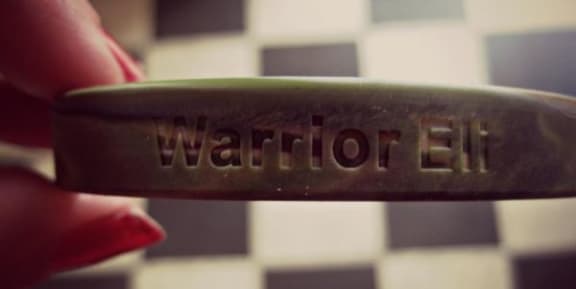
Warrior Eli bracelet Photo: (warriorelihoax.com)
Science: robotic skin
Dr Chris Smith with science news, and designing robotic skin that senses touch. Also monkeys have been able to control wheelchairs using only their thoughts.

Dr Chris Smith of The Naked Scientists Photo: SUPPLIED
Chin evolution
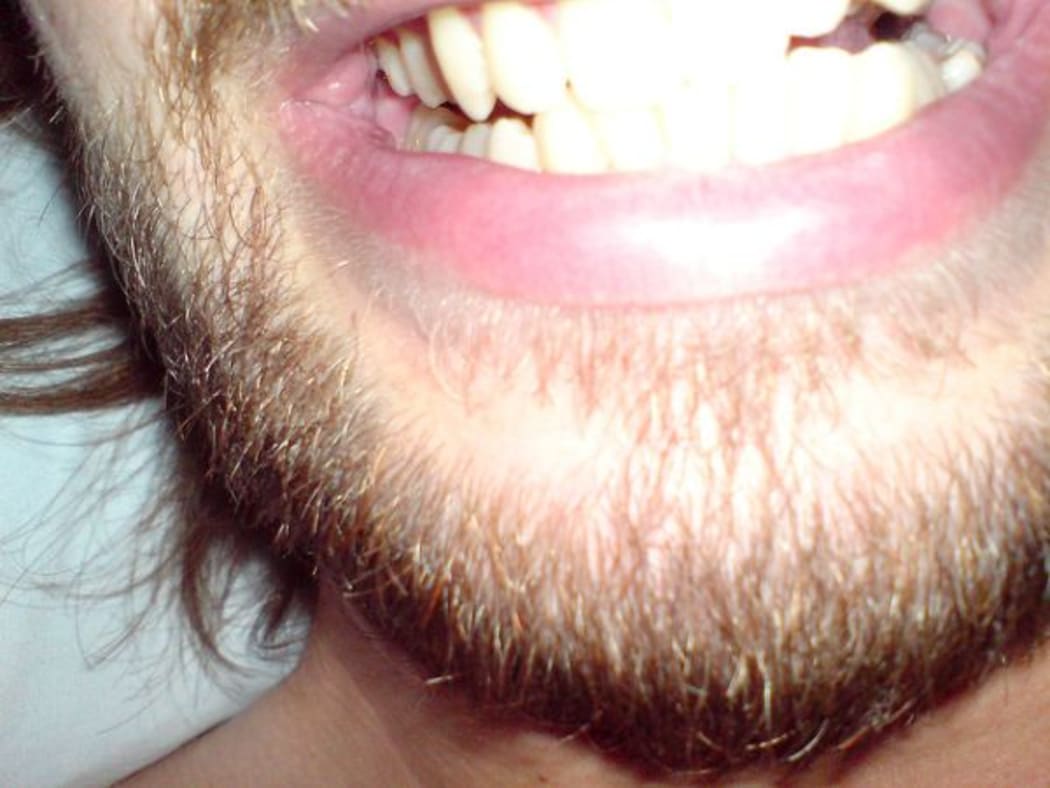
A hairy chin Photo: (Richard Riley CC BY 2.0)
We humans are unique in many ways. As bipedal hominids our powers of thought and language and emotion set us apart from other mammals.
We also cook our food, compulsively check our digital devices, and have a fondness for ethically sourced, artisanal produce which would be the envy of many in the animal kingdom (if only animals could experience envy, that is).
We're also unique in another way; our lower jaw protrudes outwards to the bit of bone we call a chin. And sorry, despite much debate in the office, your cat does not have a chin...we think...maybe...OK?!
Mysteriously, nobody really seems to know why we humans have evolved to have chins. James Pampush studies Evolutionary Anthropology, and chins, at Duke University.
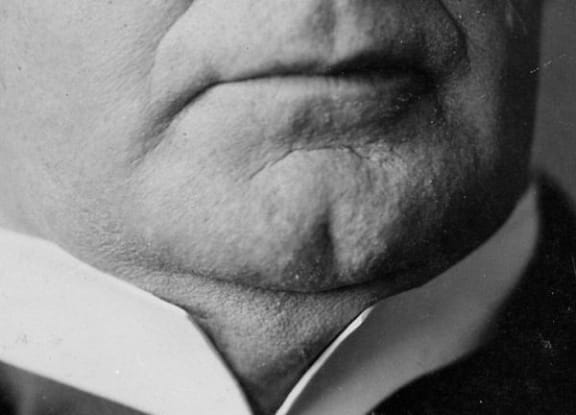
A fine example of a cleft chin, sported by US President William McKinley Photo: (Public Domain)
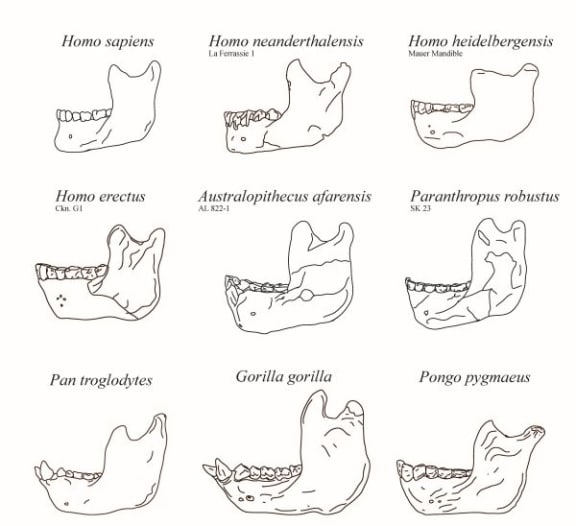
Chin evolution 101 Photo: Supplied